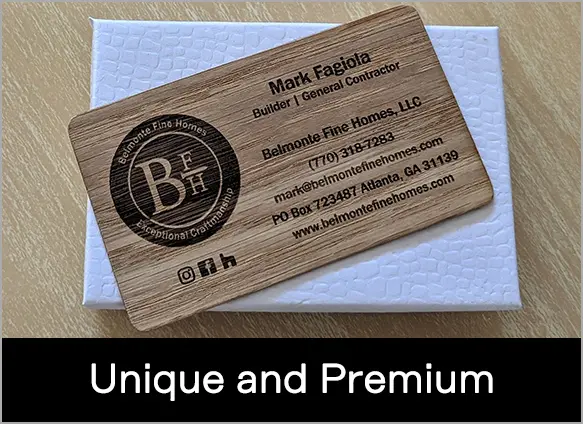NFC (Near Field Communication) paper cards and NFC wooden cards each have their own set of advantages and disadvantages, depending on the intended use and individual preferences. Here’s a comparison of the pros and cons of NFC paper cards and NFC wooden cards.
Pros of NFC Paper Cards

Cost-Efficiency
NFC paper cards are often more cost-effective to produce compared to wooden cards, making them a budget-friendly option.

Lightweight
Paper cards are lightweight and easy to carry, making them convenient for applications like event tickets or transit passes.

Customizability
NFC paper cards can be easily customized with printing, branding, and variable data, allowing for personalization and branding opportunities.
Cons of NFC Paper Cards

Durability
NFC paper cards may not be as durable as wooden cards and can be more susceptible to wear and tear over time.

Resource Consumption
The manufacturing of paper involves significant water consumption, rendering it less environmentally friendly compared to the natural growth of wood.

Limited Aesthetic Appeal
While they can be customized, paper cards may not have the same aesthetic appeal as wooden cards, which can be considered more premium.
Pros of NFC Wooden Cards

Aesthetic Appeal
NFC wooden cards have a natural and aesthetic appeal, making them suitable for upscale branding and gifting.

Durability
Wooden cards are generally more durable and can withstand wear and tear better than paper cards.

Unique and Premium
Wooden cards are unique and give off a premium feel, making them stand out in various applications, including business cards and promotional items.
Cons of NFC Wooden Cards

Cost
NFC wooden cards are often more expensive to produce compared to paper cards, which can be a significant factor for cost-sensitive projects.

Weight
Wooden cards are heavier than paper cards, which can impact shipping costs and the convenience of carrying multiple cards.

Customization
Customizing wooden cards with intricate designs or full-color printing may be more challenging and expensive compared to paper cards.
In summary, both paper cards and wood cards are environmentally friendly alternatives when compared to plastic cards, as they offer notable sustainability benefits. Unlike plastic cards, which are derived from non-renewable fossil fuels and contribute to pollution and plastic waste issues, paper cards and wood cards are made from renewable resources, such as trees or recycled paper, and have a significantly lower carbon footprint throughout their production processes. Additionally, they are biodegradable and can be recycled, further reducing their environmental impact and helping to minimize the long-term ecological footprint associated with plastic card usage.
Learn more about our NFC paper cards and wood cards.
.png)
